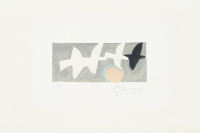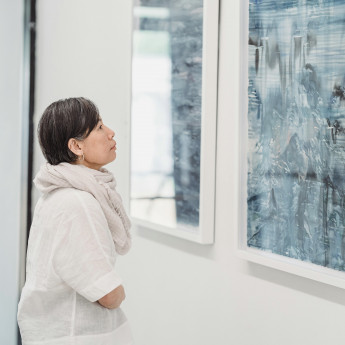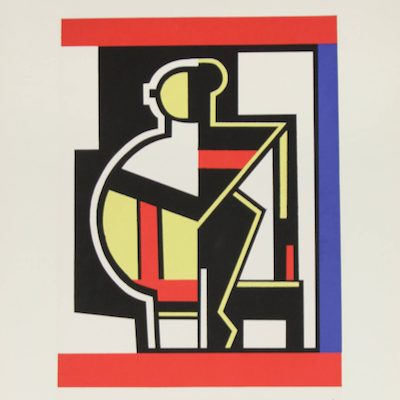
Details
Artist
Styles
Original Intaglio Print - Unsigned and not numbered - Published by Pierre de Tartas - Printed by Pierre Jean Mathan // Georges Braque's Aréion (Horse), a 1971 limited edition intaglio print, measures 38.1 x 55.9 cm. Published by Pierre de Tartas and printed by Pierre Jean Mathan, this embossing showcases Braque’s skillful manipulation of texture and form. The horse’s head is portrayed with a distinct roughness, highlighting Braque’s ability to bring movement and life to the composition through the subtle interplay of light and shadow. The embossing technique emphasizes the tactile quality of the surface, giving the impression of depth and dimensionality. The image captures the essence of Braque’s style, combining simplicity with a powerful, expressive form.
Aréion (Horse), 1971
form
Medium
Size
38.1 x 55.9 cm
- Inches
- Centimeters
Edition
Price
- USD
- EUR
- GBP
Details
Artist
Styles
Original Intaglio Print - Unsigned and not numbered - Published by Pierre de Tartas - Printed by Pierre Jean Mathan // Georges Braque's Aréion (Horse), a 1971 limited edition intaglio print, measures 38.1 x 55.9 cm. Published by Pierre de Tartas and printed by Pierre Jean Mathan, this embossing showcases Braque’s skillful manipulation of texture and form. The horse’s head is portrayed with a distinct roughness, highlighting Braque’s ability to bring movement and life to the composition through the subtle interplay of light and shadow. The embossing technique emphasizes the tactile quality of the surface, giving the impression of depth and dimensionality. The image captures the essence of Braque’s style, combining simplicity with a powerful, expressive form.
- Recently Added
- Price (low-high )
- Price (high-low )
- Year (low-high )
- Year (high-low )
Georges Braque
Le Trèfle, From Lettera Amorosa, 1963
Limited Edition Print
Lithograph
USD 20,000 - 25,000
What is Cubism?
Cubism is an art movement that aimed to depict multiple perspectives of objects or figures within a single picture. Artists Georges Braque and Pablo Picasso pioneered this style around 1907. The name Cubism emerged from their use of geometric shapes and outlines that often resembled cubes, breaking objects down into abstracted forms.

























